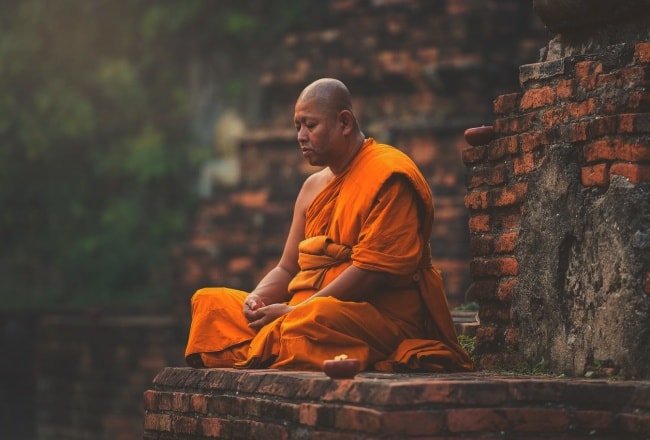In the Khmer language, Pchum or Brochum means “a meeting or gathering”. Ben means “a ball of something”, such as rice or meat. The Pchum Ben festival originated in the Angkorian era when people followed animism before Brahma or Buddhism.
Both Buddhism and animism reflect Khmer respect and remembrance for their ancestors.
Pchum Ben is also a convenient way for Buddhist monks to receive food during the heaviest part of the rainy season while they stay in the pagodas to follow their moral principles.
The first 14 days of the Khmer month Pheakta Bot are called Kan Ben (“observed celebration”). The 15th day is called Brochum Ben or Pchum Ben Day. During Kan Ben, people give Buddhist monks gifts of food and candles. At night Buddhist monks recite a protective prayer. Cambodian artists play traditional music such as yike and lakhon basac. Pchum Ben Day is the biggest celebration. Villagers come from all around to prepare the pagoda of their village the night before the celebration. Pchum Ben is when the villagers gather to celebrate in their villages.

The day is a time when many Cambodians pay their respects to deceased relatives of up to 7 generations. Monks chant the suttas in Pali language overnight (continuously, without sleeping) in prelude to the gates of hell opening, an event that is presumed to occur once a year, and is linked to the cosmology of King Yama originating in the Pali Canon. During this period, the gates of hell are opened and ghosts of the dead (preta) are presumed to be especially active. In order to combat this, food-offerings are made to benefit them, some of these ghosts having the opportunity to end their period of purgation, whereas others are imagined to leave hell temporarily, to then return to endure more suffering; without much explanation, relatives who are not in hell (who are in heaven or otherwise reincarnated) are also generally imagined to benefit from the ceremonies.
In temples adhering to canonical protocol, the offering of food itself is made from the laypeople to the (living) Buddhist monks, thus generating "merit" that indirectly benefits the dead; however, in many temples, this is either accompanied by or superseded by food offerings that are imagined to directly transfer from the living to the dead, such as rice-balls thrown through the air, or rice thrown into an empty field. Anthropologist Satoru Kobayashi observed that these two models of merit-offering to the dead are in competition in rural Cambodia, with some temples preferring the greater canonicity of the former model, and others embracing the popular (if unorthodox) assumption that mortals can "feed" ghosts with physical food.





 05/01/2026
05/01/2026
























Jolie LIEMMy name is Jolie, I am a Vietnamese girl growing up in the countryside of Hai Duong, northern Vietnam. Since a little girl, I was always dreaming of exploring the far-away lands, the unseen beauty spots of the world. My dream has been growing bigger and bigger day after day, and I do not miss a chance to make it real. After graduating from the univesity of language in Hanoi, I started the exploration with a travel agency and learning more about travel, especially responsible travel. I love experiencing the different cultures of the different lands and sharing my dream with the whole world. Hope that you love it too!